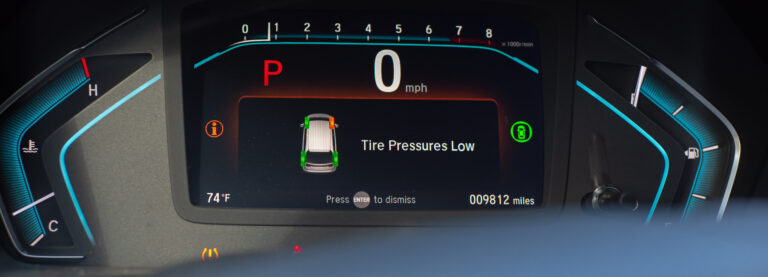How To Check Your Car’s AC System

When summer heat sets in, a functioning car air conditioning system becomes more than just a luxury; it’s a necessity. Whether you’re commuting through St. Louis traffic or taking a weekend road trip across Missouri, you need cool, reliable air to stay comfortable. But like any other part of your vehicle, your AC system can wear down over time. The good news? Catching early warning signs can save you from more costly repairs down the line.
In this blog, we’ll walk through how to check car AC systems for proper functionality, what to look for when something seems off, and when it’s time to call in the pros.
Why Your Car’s AC System Matters
Your vehicle’s AC system keeps you comfortable, but it also plays a critical role in your overall driving experience. During those hot and humid Missouri summers, it keeps cabin temperatures manageable and improves air quality by reducing humidity inside the car.
In addition to comfort, the AC system helps defog your windows and maintain clear visibility during humid or rainy conditions. When it stops working properly, you could be dealing with reduced safety and bigger mechanical issues.
Components of a Car’s AC System
The AC system is comprised of various components that ensure cool air is coming out of your vents. The main parts of your vehicle’s air conditioning system include:
- AC Compressor: Pressurizes and circulates refrigerant through the system.
- Condenser: Converts high-pressure gas into a liquid by cooling it down.
- Evaporator: Absorbs heat from inside the vehicle and cools the air.
- Expansion Valve/Orifice Tube: Regulates refrigerant flow into the evaporator.
- Refrigerant: The fluid that moves through the system to cool the air.
- AC Compressor Clutch: Engages or disengages the compressor as needed.
- Cabin Air Filter: Helps trap contaminants and improve airflow.
When one of these parts fails, you’ll likely notice some telltale signs.
What Happens When It Fails
Wondering if your car air conditioning system isn’t working like it should? Here are a few common issues that might indicate something’s off:
- Warm air blowing from the vents
- Weak or inconsistent airflow
- Unusual smells, especially a musty or mildew odor
- Loud noises like squealing, clicking, or hissing when the AC is running
- Foggy or hazy windows that don’t clear quickly
- Leaks or oily residue under the car or around AC components
If you’ve experienced any of the above, it might be time for a deeper look.
How To Check Your Car’s AC System at Home
While complete diagnostics should be handled by a professional, there are a few ways to check your car’s AC at home and identify early warning signs.
Step 1: Start the Vehicle and Listen
Turn your AC on full blast and listen closely. Do you hear any clicking, squealing, or hissing sounds? These noises can be indicators of mechanical problems like a failing AC compressor clutch, worn belts, or refrigerant leaks. If the system kicks on without issue and stays quiet, that’s a good sign, but it’s not the whole story.
Step 2: Check for Cold Air Flow
After the AC has been running for a minute or two, hold your hand near the vents. The air should be cold and consistent. If it feels warm, it could be a sign of low refrigerant levels or a problem with the AC compressor. On the other hand, if you’re feeling cool air but the flow is weak, a dirty cabin air filter or blower motor issue might be the culprit.
Step 3: Inspect for Visible Leaks
One of the most common car AC troubleshooting issues is a refrigerant leak. Pop the hood and look for oily residue or staining around the AC lines, compressor, fittings, and low-pressure port. The low-pressure port is where refrigerant is added during recharges, usually found on a thicker aluminum tube near the firewall or accumulator. Leaking refrigerant may leave a greasy film or a green/yellow dye if UV dye was previously added. If you are attempting to use a recharge kit, make sure you’re connecting to the low-pressure side, never the high side.
*Note: refrigerant is under pressure—never try to open or touch these components yourself.
Step 4: Look at the Compressor Clutch
With the engine running and the AC switched on, observe the compressor clutch. It should engage and start spinning along with the pulley. If it doesn’t move at all, or if it engages only briefly before stopping, there may be an electrical or mechanical fault. Always keep your hands and tools away from moving parts while inspecting.
Step 5: Monitor for Bad Smells or Foggy Windows
A musty odor when the AC runs could signal mold or mildew inside the evaporator core or vents. Additionally, if your windows fog up and the AC doesn’t quickly clear them, your system may be struggling with humidity control or a failing defroster component.
When to Call the Professionals
While some issues can be spotted with a visual check or a quick test, AC systems are complex and require specialized tools to diagnose and repair them fully. Topping off refrigerant without identifying a leak can cause more harm than good, and incorrect DIY repairs can damage expensive components or even void warranties. Additionally, having the right tools is critical. For example, using a vacuum pump removes moisture and air from the system before adding refrigerant, which is crucial to ensure long-term performance and avoid internal corrosion.
When in doubt, let the experts handle it. At Telle Tire & Auto Centers, our ASE-certified technicians are trained to handle AC systems from all makes and models. We use professional-grade diagnostic tools to find the root cause of the issue and fix it right the first time.
Stop by Telle for an AC Inspection Today
If you’ve noticed that your car’s AC just isn’t performing like it used to, don’t wait for a total breakdown. Stop by your nearest Telle Tire location for a professional AC inspection and stay cool all summer long.
With decades of experience providing trusted auto service across Missouri, we’re proud to keep drivers comfortable and confident no matter the weather.
Stay cool. Drive safely. Take it to Telle.

Take it to telle
Stay Safe with a Tire Check from Telle Tire
Worried about your tread depth or tire condition heading into the summer storm season? Take it to Telle. Our expert technicians can assess your tires, check pressure levels, and recommend replacements when necessary, helping you stay in control regardless of the weather conditions. Stay safe, stay prepared, and if you’re unsure about your tires, schedule a visit with your nearest Telle Tire & Auto Centers location today.
Stay Informed
Recent Articles from Telle Tire

Are Smart Tires & TPMS Worth It?
Tires play a bigger role in safety and performance than many drivers realize. If your tires are underinflated, worn unevenly, or overheating, your chances of a…

A Step-by-Step Fall Car Inspection & Tire Checklist to Avoid Breakdowns
As the temperatures drop, your vehicle feels the effects just as much as you do. Cold weather puts extra strain on critical systems like your battery,…

What Does Uneven Tire Wear Mean? Causes & Fixes
Uneven tire wear is a common issue drivers face, but it’s one of the easiest to overlook. When tire tread wears down abnormally, it’s more than…
